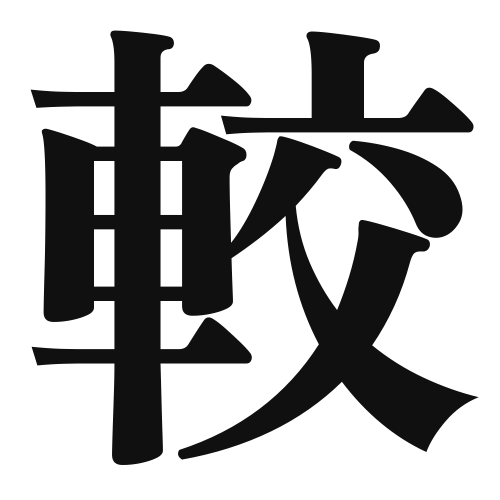1. Overview of Meaning
The kanji “較” (kaku) generally means “to compare” or “to contrast.” It is used to express the act of evaluating differences or similarities between two or more items.
2. Formation and Radical
Formation of the Kanji: The kanji “較” is a phonetic-ideographic character (形声文字). It combines the radical for “to compare” (較) with a phonetic component that suggests its pronunciation.
Radical: The radical for “較” is “較” itself, which relates to comparison and evaluation.
3. Examples of Usage
Common Words and Phrases: Some frequently used words that include “較” are “比較” (hikaku – comparison) and “較差” (kakusa – difference).
Example Sentences in Daily Conversation:
- この二つの製品を較べてみましょう。 (Let’s compare these two products.)
- 彼の成績は私のよりも較べて良いです。 (His grades are better compared to mine.)
4. Synonyms and Antonyms
Similar Kanji: A similar kanji is “比” (hi), which also means “to compare,” but it is often used in a more general sense without the connotation of evaluation.
Opposite Kanji: An antonym is “無” (mu), which means “nothing” or “absence,” indicating a lack of comparison or difference.
5. Cultural and Historical Background
Relation to Japanese Culture: The concept of comparison is significant in Japanese culture, where harmony and balance are often emphasized. Comparing different aspects of life, such as food, art, and traditions, is common.
Proverbs and Idioms: One relevant proverb is “比べるものがない” (kuraberu mono ga nai), which means “there is nothing to compare it to,” indicating something unique or unparalleled.
